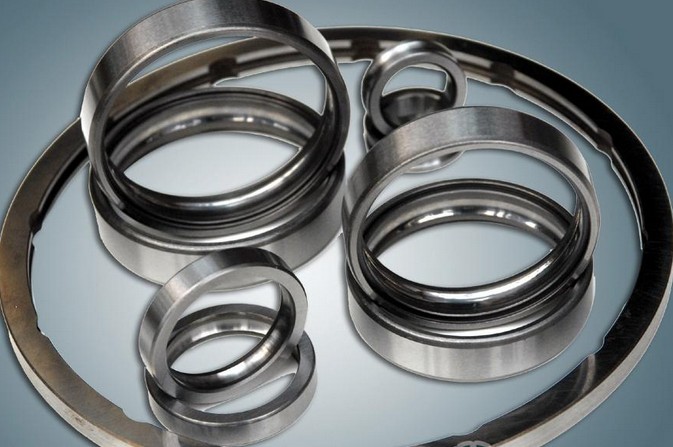Deep Groove Ball Bearing Ring
Although there are many types of deep groove ball bearings, and there are differences in their structural type, tolerance grade, material selection and processing methods, their basic manufacturing process includes the following contents:
1. Manufacturing of deep groove ball bearing parts – Inspection of bearing parts – demagnetization, cleaning and rust prevention of bearing parts – bearing assembly – Inspection of finished products of deep groove ball bearings – demagnetization and cleaning of finished products of deep groove ball bearings – storage of finished products of oil coated packing bucket for finished products of bearings.
2. Ferrule is an important part of deep groove ball bearing. Due to the wide variety of deep groove ball bearings, the ferrule size, structure, manufacturing equipment and process methods of different types of deep groove ball bearings are different. In addition, due to the many processing procedures, complex process and high machining accuracy requirements of the ring, the machining quality of the ring has an important impact on the accuracy, service life and performance of the deep groove ball bearing.
3. The raw material for manufacturing the ferrule is cylindrical bar material or pipe material. At present, according to different forming processes, the deep groove ball bearing ferrule generally has the following manufacturing processes.
1) (bar) blanking – forging – annealing (or normalizing – turning (cold rolling forming) – heat treatment, quenching and tempering – grinding – Part Inspection – demagnetization, cleaning – submission for assembly.
2) (bar and tube) blanking – cold rolling forming – heat treatment, quenching and tempering – grinding – Part Inspection – demagnetization, cleaning – submission for assembly.
3) (tube material) blanking – turning and forming – heat treatment, quenching and tempering – grinding – Part Inspection – demagnetization, cleaning – submission for assembly
4) (bar) blanking – cold (warm) extrusion – turning – heat treatment, quenching and tempering – grinding – Part Inspection – demagnetization, cleaning – submission for assembly

Ferrule forming methods: at present, in ferrule processing, the forming methods mainly include the following: forging forming, turning forming, cold rolling forming and cold (warm) extrusion forming.
1. Forging forming
Forging can eliminate the internal defects of metal, improve the metal structure, make the metal streamline distribution reasonable and the metal tightness good. The forging forming process is widely used in the forming process of deep groove ball bearings, which can complete the processing from small products with an inner diameter of ~ 20mm to super large products with an outer diameter of 5000mm.
2.Cold rolling forming
Cold rolling process is an advanced process that can improve material utilization, improve metal structure compactness and maintain metal flow linearity. It is a chip free processing method. Theoretically, cold rolled products can be directly heat treated and ground without turning. At present, the cold rolling process is mainly applied to medium and small deep groove ball bearings. The main process is: forging blank (ring) – turning (except channel) – rolling (groove and chamfer) full diameter – soft grinding of two end faces. When cold rolling process and forging process are adopted, the accuracy of products is not only affected by the accuracy of equipment, but also by the accuracy of forming die.
3. Turning forming
In the deep groove ball bearing industry, the traditional turning forming technology is to use a special lathe and use the centralized process method to complete the forming process. However, because the equipment used in this method is difficult to adjust, the precision of machine tool is low and the utilization rate of materials is low, this process method is being eliminated.






